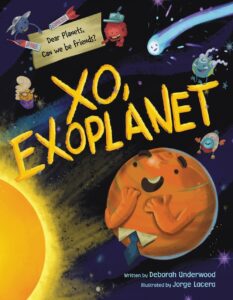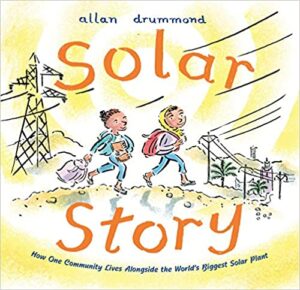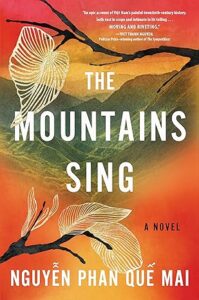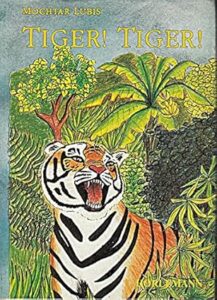What is Informational Fiction?
Informational fictions are stories with the main purpose of conveying information and facts. They have the Narrative Structure as each story should have. Therefore, they are NOT non-fiction. They are NOT narrative nonfiction (biography or memoir) either. Because informational fictions have fictitious characters with made-up dialogues which narrative non-fiction doesn’t have.
Informational fictions are NOT science fiction (sci-fi) too. Science fiction typically deals with futuristic concepts such as advanced science and technology, space exploration, etc.
One of the best-known examples of informational fiction is THE MAGIC SCHOOL BUS by Joanna Cole and Bruce Degen. Miss Frizzle, the students, and the bus are fictitious. Yet, the scientific facts in the story are true, and the purpose of the story is to teach science in an accessible way.

Informational fictions have different subcategories. Fictions based on historical information are called historical fiction. Please read this blog post if you are interested in historical fiction picture books.
In this blog post, we look at informational fiction picture books that explore scientific facts and nature.
Anthropomorphism
One of the literary devices in writing informational fiction is Anthropomorphism. The word anthropomorphism stems from the Greek word anthrōpomorphos, anthrōpos means “human being” and morphē means form. This literary device assigns human characteristics, emotions, and behaviors to nonhuman entities like animals or inanimate objects.
For example, MY HAPPY YEAR BY E.BLUEBIRD (2019) by Paul Meisel is a fictitious diary of a bird, called E.BLUEBIRD. The Narrator (the bird) starts the narration on June 1 when the bird hatches out of the egg and it gives details of the first year of a bird’s life.

If you like this book, you might like the other three titles in this series (A NATURE DIARY) from the same author: MY AWESOME SUMMER BY P. MANTIS (2017), MY STINKY SUMMER BY S. BUG (2020), and MY TINY LIFE BY RUBY T. HUMMINGBIRD (2021).

Or, TREEMENDOUS: DIARY OF A NOT YET MIGHTY OAK (2021) by Bridget Heos and Mike Ciccotello teaches children about the life of an oak.

Using anthropomorphism gives the chance to add an additional social-emotional learning subject to the story (of course, depending on the story). For example, for XO, EXOPLANET (2021) by Deborah Underwood and Jorge Lacera, the author used anthropomorphism (writing letters) to inform the reader about exoplanets. The solar system’s planets cannot accept that another object outside their system is also a planet. They call it an exoplanet. But the exoplanet insists that it is a planet because it rotates around its sun!

Another interesting example of using anthropomorphism with an SEL subject is PLUTO GETS THE CALL (2019) by Adam Rex and Laurie Keller. The story tells children the fact that Pluto doesn’t belong to the solar system. Also, it shows the feeling of being rejected.

Human Characters
Informational fiction may have human characters. However, character-building in informational fiction is different than character-building in historical fiction. In the former, the characters are not in focus; the information is. The character’s feelings and behavior don’t matter. The priority is to convey facts to the reader. The characters are only medium. In contrast, in historical fiction, most of the time, the characters are in focus.
For example, the students in SOLAR STORY: HOW ONE COMMUNITY LIVES ALONGSIDE THE WORLD’S BIGGEST SOLAR PLANT (2020) by Allan Drummond are meant to inform readers about solar energy and the largest solar plant in the world—the Noor Solar Power Plant in Morocco’s Sahara Desert.

Or, the Narrator of GREEN CITY: HOW ONE COMMUNITY SURVIVED A TORNADO AND REBUILT FOR A SUSTAINABLE FUTURE (2016) by Allan Drummond is an unknown person who, in 2007, lived in Greensburg, Kansas. The Narrator remembers how the tornado destroyed the entire town and how the dwellers rebuilt it—in a sustainable way. Who the Narrator is doesn’t matter to the story.

The story of GRANDPA CACAO: A TALE OF CHOCOLATE, FROM FARM TO FAMILY (2019) by Elizabeth Zunon informs children about the cacao harvest and the process—a father explains the process to her daughter. The only specification about the character is that the father was born on the Ivory coast.

BLACK BEACH. A COMMUNITY, AN OIL SPILL, AND THE ORIGIN OF EARTH DAY (2023) by Shaunna & John Stith, and Maribel Lechuga is another brilliant example that informs children about ocean pollution.






Thank you for this very informative post on informational fiction.
You are welcome.
Your blog posts are so helpful. I always learn something new.
Happy to hear this.